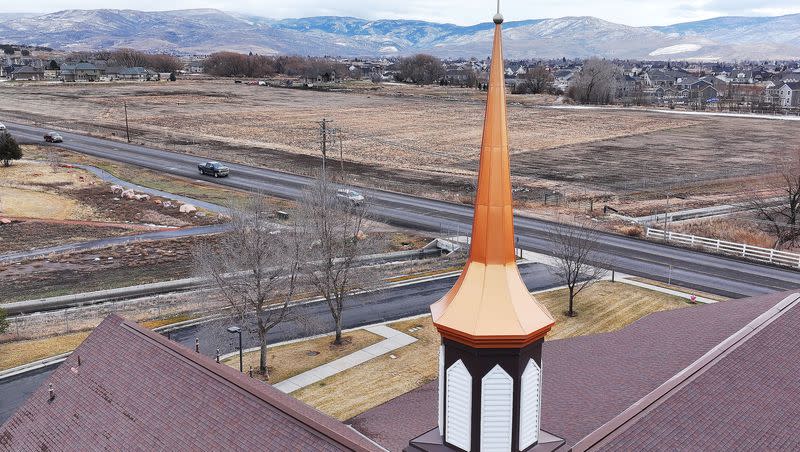Referendum effort to challenge Heber temple fails

A referendum initiative that sought to reverse the Wasatch County Council’s unanimous approval of the Heber Valley Utah Temple failed to gather enough signatures to make it on the 2024 general election ballot.
The Wasatch County Clerk-Auditor’s office announced on Tuesday that Save Wasatch Back Dark Skies, the group behind the referendum application, was unable to gather the required 3,235 signatures during the 45-day period allotted under county code. Volunteers with the group gathered 2,724 signatures total, with 2,402 qualifying as valid, according to the county clerk-auditor’s final tally.
“Let this be a reminder that the people of our county support and value our constitutional freedoms. We are great because we are tolerant of others and recognize that our personal liberties matter,” said Luke Searle, a member of the Wasatch County Council, in a written statement to the Deseret News.
He continued: “Due process and the law were the basis of the decision to approve the Legislative Development Agreement. The people have spoken by electing their current leaders, giving input through the process, and by choosing not to sign this latest attempt in opposition.”
The referendum would have put the county’s legislative development agreement with The Church of Jesus Christ of Latter-day Saints before Wasatch County voters in November. The church announced the temple during the October 2021 General Conference and revealed its location in September 2022.
“We thank the thousands of people who signed the petition,” Save Wasatch Back Dark Skies said in a post on their Facebook page. “This is not a loss, it is in fact a beginning. ... We need to hold our council members and planners accountable for the development approved in our valley. If they do not feel our dark skies, our water, our safety, our view scapes, our land and animals are important, we are here to remind them that they are.”
In addition to other modifications, the church decreased the amount of light that will shine on the building — making it one of the dimmest temples in the world, reduced the color temperature of the light and scheduled turning off the light each night at 11 p.m. The church went so far as to even change the exterior stone to minimize light reflection.
Related
Meet the Catholic former ambassador supporting a temple in Heber City
Heber Valley Utah Temple approved. See why the church agreed to dim the lighting
Wasatch County is currently facing two lawsuits spearheaded by Save Wasatch Back Dark Skies and individuals living in the affluent gated community Red Ledges, located a few blocks from the temple plot. The plaintiffs argue that the temple as planned will be too bright, too disruptive and did not follow the proper legal process.
The first lawsuit came after the council worked with the church and an independent dark sky consultant to update a decades-old lighting ordinance, removing the total prohibition on upward light but regulating other important features of dark sky compliance, such as brightness, color temperature and the reflectivity of building surfaces.
Save Wasatch Back Dark Skies opposed the change, saying it would negatively impact Heber Valley’s dark sky status and alleged the county had not responded appropriately to public information requests filed in relation to the lighting ordinance.
Another lawsuit was filed following the county council’s unanimous approval of the temple project on Nov. 8 during a public hearing. In this case, the plaintiffs objected to the county’s decision to approve the temple project through a legislative development agreement as opposed to a conditional use permit. Both processes are proper under state law but the plaintiffs alleged the county had not complied with applicable land use regulations or the county’s general plan.
The county has asked for both lawsuits to be dismissed. The Church of Jesus Christ of Latter-day Saints filed a motion on Jan. 22 to intervene in the second lawsuit to be included as a defendant.
The Wasatch County Council’s decision to approve the temple project followed unprecedented steps taken by the church to revise its initial plans, make compromises and clarify misconceptions about lighting regulations, water drainage mechanisms, zoning policies and traffic mitigation.

